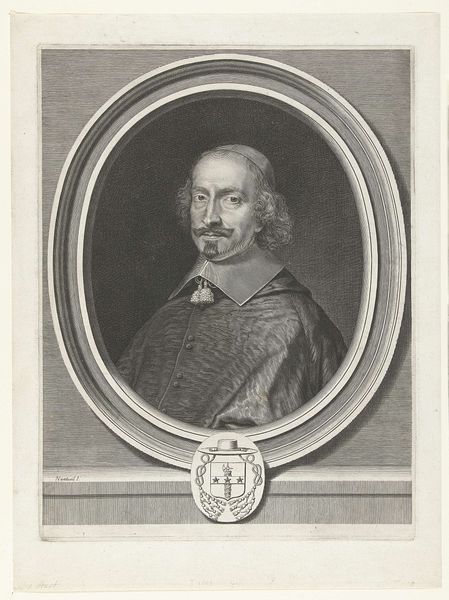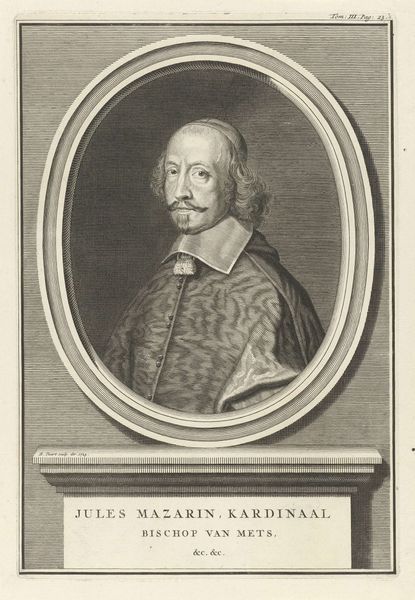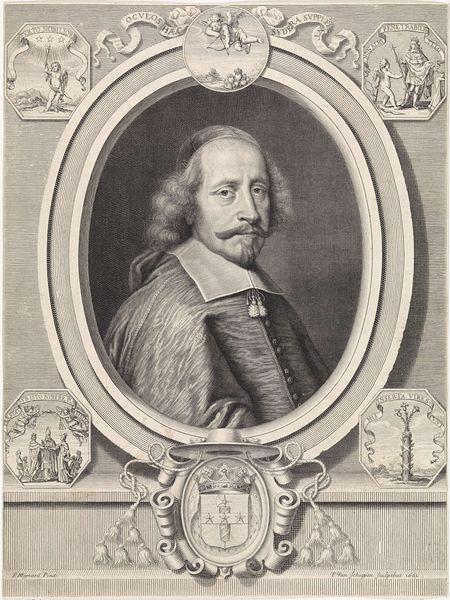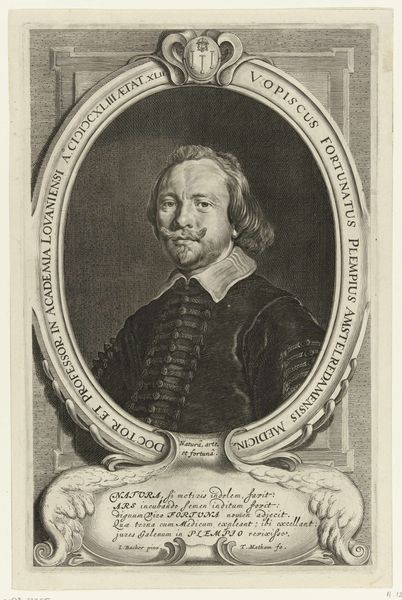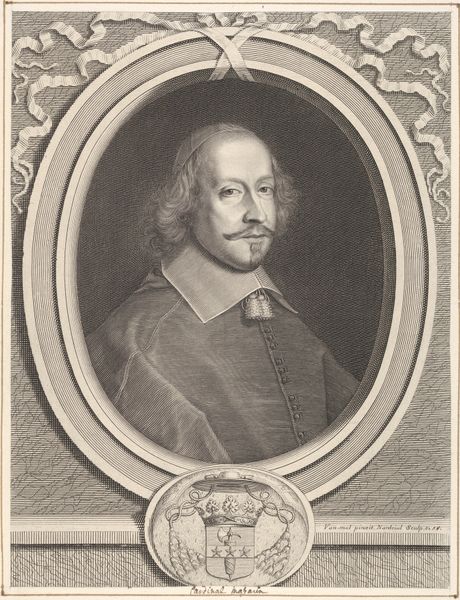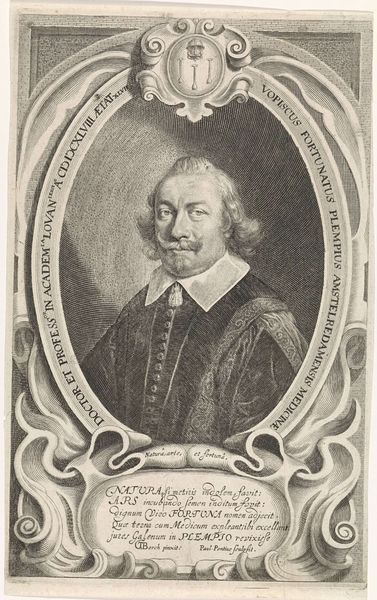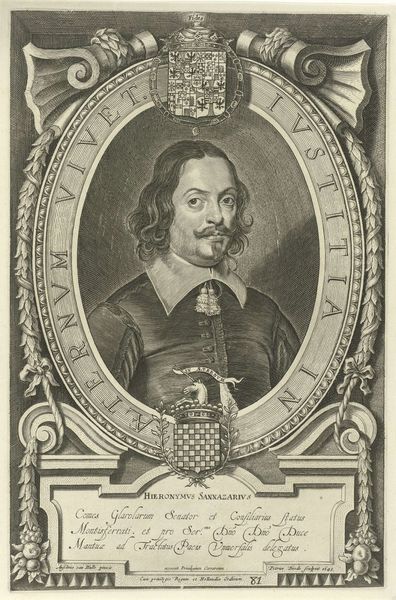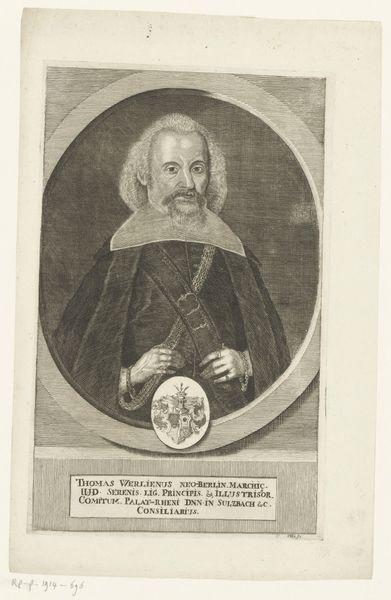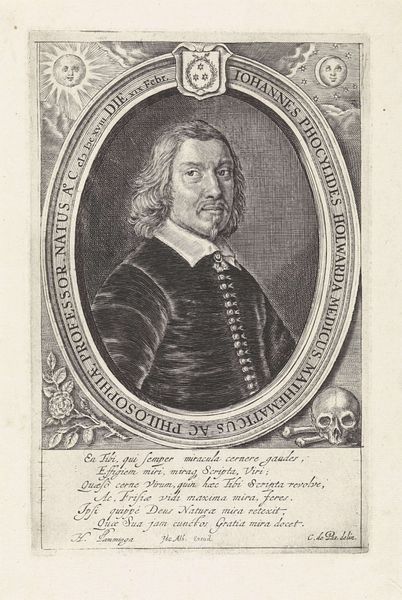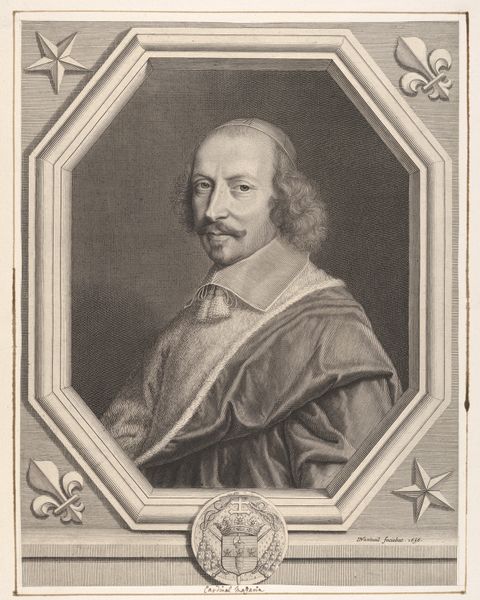
print, engraving
#
portrait
#
baroque
# print
#
portrait reference
#
engraving
Dimensions: height 314 mm, width 221 mm
Copyright: Rijks Museum: Open Domain
Curator: Engravings, especially portraits like this one of Gabriel Oxenstierna from 1650 by Jeremias Falck, are fascinating because they showcase a very particular kind of material exchange and labor. Editor: It is striking! You can really see the detail achieved with the engraved lines, particularly in rendering the textures of his hair and clothing. How did the process influence the style? Curator: Precisely. The entire economic and social underpinning is that these weren’t unique objects in the way we think about paintings. These prints could be widely distributed, disseminating the image of Oxenstierna, but also showcasing the engraver's skill. Consider the societal value placed on both the subject and the labor that went into reproducing their likeness. How does that affect our understanding of the piece's meaning? Editor: So, it's less about the individual artwork as a unique object and more about its role in disseminating information and reflecting social hierarchies, which is a perspective shift! Curator: Absolutely. Think about the resources that were needed—the metal plate, the tools, the workshop. Consider how Falck made a living and what was at stake. Then, the paper it was printed on was itself an industrial product. Everything, down to the ink, signifies materiality. Editor: That really shifts my focus. I hadn't really considered the economics of the printmaking. I'm now considering all these "ingredients". Curator: It pushes us to rethink notions of artistic genius as residing solely in the artist's hand, refocusing instead on how labor and materials are deployed. Editor: Thanks; I will look at art so differently from now on.
Comments
No comments
Be the first to comment and join the conversation on the ultimate creative platform.

